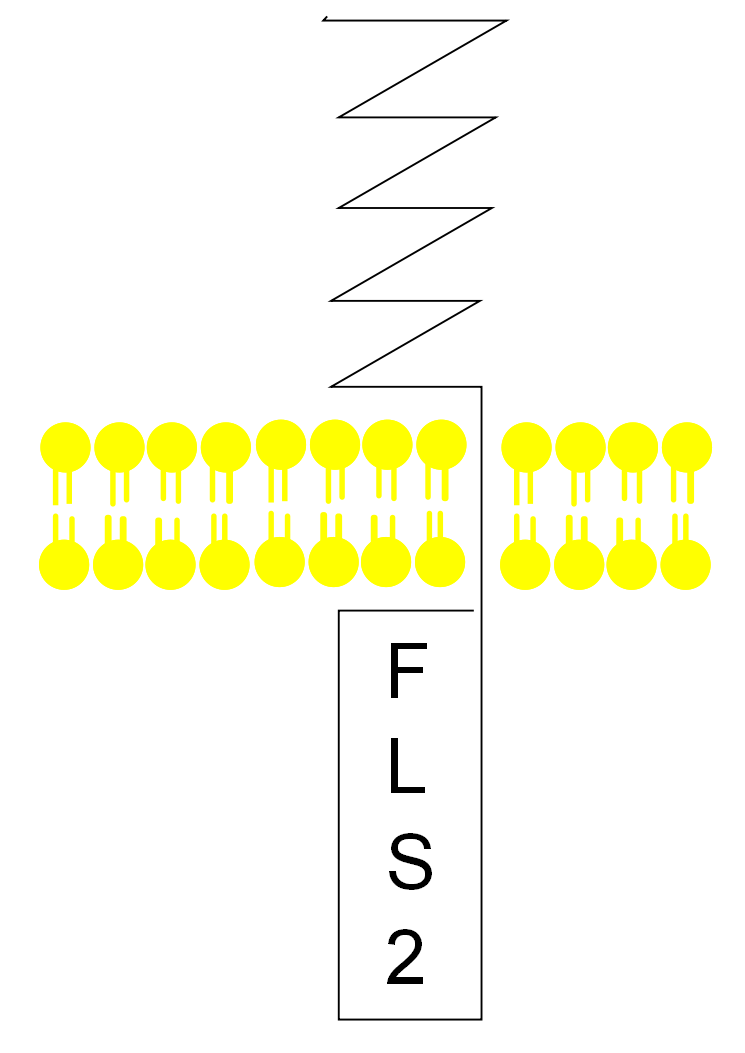Attacking bacteria are sensed by plants which need to fine-tune their immune systems in response.
Improving our understanding of immune regulation in both plants and humans could lead to cures for allergy, aid treatment of autoimmune sufferers and provide potential ways of improving the protection of crops and increasing yield. Researchers at Texas A&M University have published a paper in Science outlining one mechanism by which plants regulate their response to threats.
"Normally the field it is focused on how the immune response is activated" said Libo Shan, one of the authors of the study. "The two enzymes we are looking at are not to activate but to tune-down the plant response".
 When burnt toast sets off a fire alarm, it's dealt with by responding to the fire hazard and removing the charred bread. Then follows the obligatory window-opening and towel waving under the smoke detector to turn off the now un-necessary alarm. In a similar way, immune systems must be able to silence a warning alarm after its message has been received.
When burnt toast sets off a fire alarm, it's dealt with by responding to the fire hazard and removing the charred bread. Then follows the obligatory window-opening and towel waving under the smoke detector to turn off the now un-necessary alarm. In a similar way, immune systems must be able to silence a warning alarm after its message has been received.
Failure to do so can lead to prolonged defensive responses. This can contribute to the immune system attacking the person's own tissues, a condition known as autoimmunity. The same problem is faced by plants, where non-stop signaling disrupts growth and distributes resources down inappropriate avenues of defense. This leaves less available for plant growth and seed production. Turning down the signal also means that the plant is once again receptive and can be ready to respond to new danger signs.
Plants recognize an incoming attacker by using sensors to detect a part of the intruder called a PAMP (Pathogen Associated Molecular Pattern). Detecting this warns the plant of the bacterial presence so that defensive measures can be taken, such as laying down callose (thickening part of the cell wall to provide a physical barrier) and increasing production of hydrogen peroxide, which is toxic to bacteria.
The researchers focused on a Pathogen Recognition Receptor (PRR) called FLS2. This recognizes a PAMP found on the bacterial tail called flg22. Once FLS2 has done its job, and alerted the plant to the bacterial presence, it should be switched off.
This is achieved by another membrane protein called BAK1, which recruits the activity of two important enzymes, PUB12 and PUB13. These enzymes tag the FLS2 sensor with a marker called ubiquitin. "The host cell then knows it should shut down the response and put the protein in the trash can" explains Libo Shan.
Of particular interest is the fact that the enzyme is "made up of two motifs" explains Libo Shan, "One of these motifs is very unique to plants, however the other is highly conserved and found in many organisms." In humans FLS2 has analogous proteins which are thought to be controlled by a similar mechanism. Continued work will shed more light on this area.
"This is just the beginning" exclaims Libo Shan "The enzymes we are studying are part of a large family, most of which have unknown function". Understanding how plants tune-down warning sirens will not only help improve plant health, but may also be applied to human treatments.
|
|
| 1) The non-activate state of FLS2.FLS2 in an unactivated state before any bacteria arrive. | 2) FLS2 detects bacterial flg22.The pathogen recognition receptor (PRR) detects the presence of the bacterial tail (flg22) and this triggers defensive responses such as callose deposition and hydrogen peroxide production. |
|
|
| 3) BAK1 associates with FLS2.BAK1 (along with the associated enzymes PUB12 and PUB13) attach to FLS2. FLS2 phosphorylates the PUB proteins to activate them. | 4) FLS2 becomes tagged for destruction.The activated PUB proteins tag the FLS2 sensor with a marker called ubiquitin. This attracts proteosomes which then degrade the cytosolic side of FLS2. |
|  |
| 5) Proteosomes recognise the marker and move in to destroy FLS2 | 6) The alarm signal is silenced.FLS2 is destroyed so the alarm is silenced. BAK1 is left untouched which is important as it is a common signaling partner of many membrane receptors involved in both immunity and development. |















Comments
Add a comment